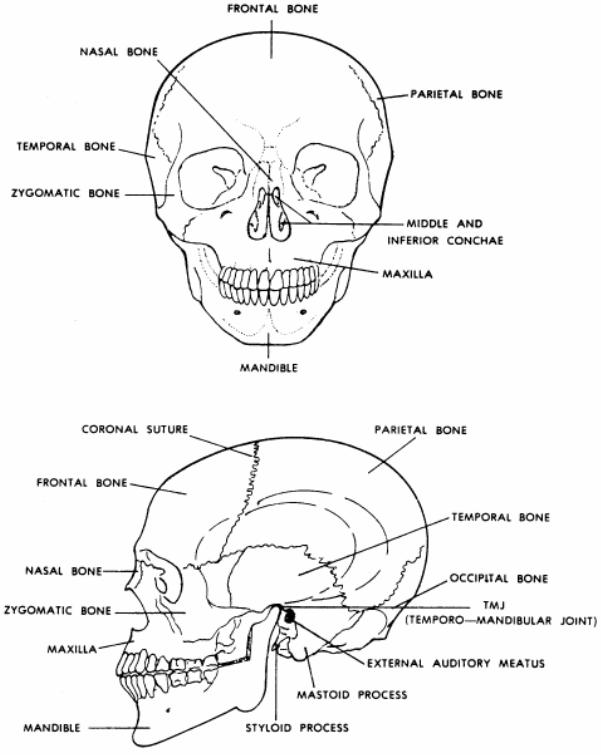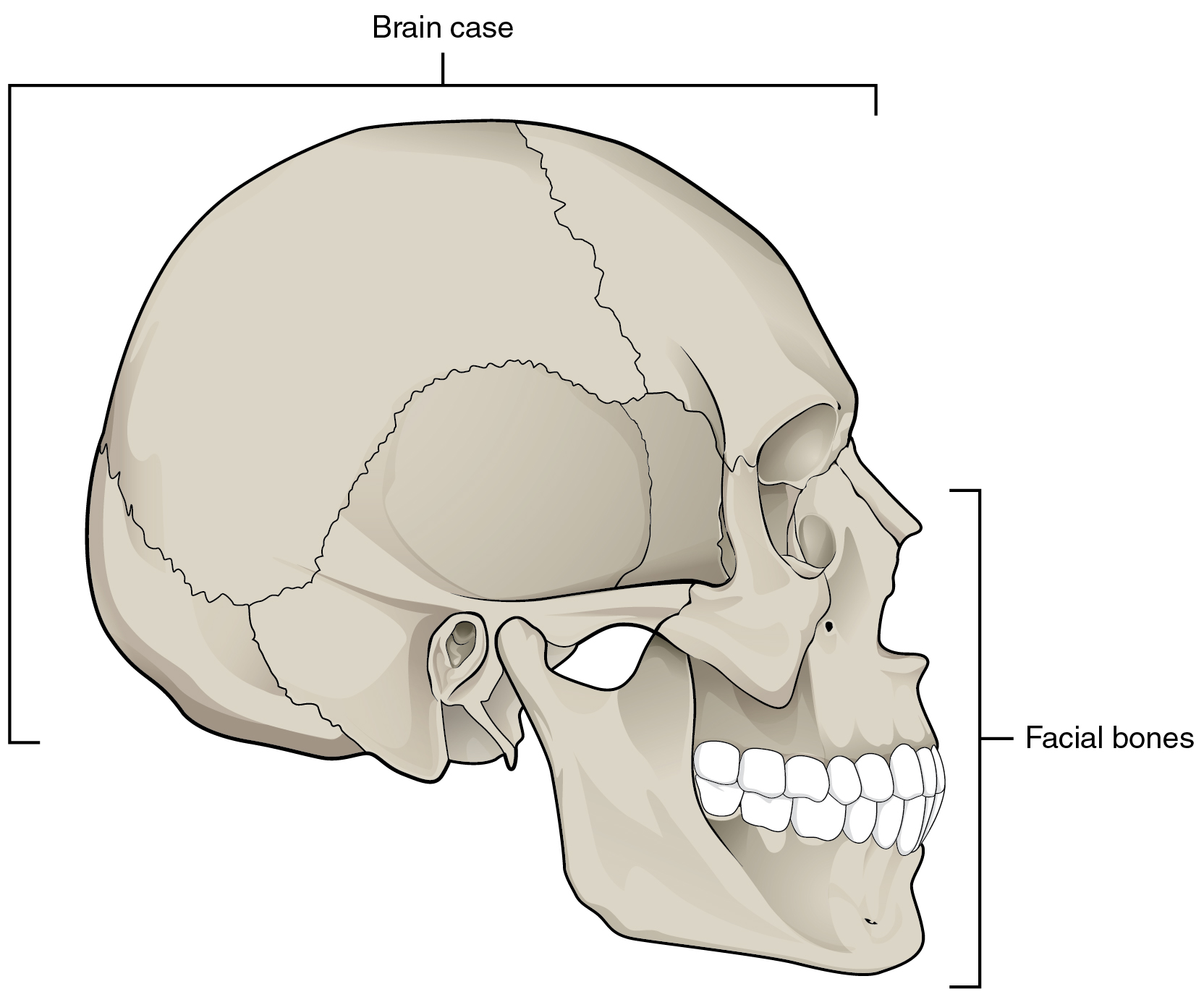
Of these genes, DCHS2, RUNX2, GLI3, PAX1 and PAX3 were found to determine nasal morphology, whereas EDAR impacts chin protrusion. Cross-analysis of osteological variables and genome-wide SNPs has identified specific genes that control this craniofacial development. Variation in craniofacial form between humans is largely due to differing patterns of biological inheritance. As with the neurocranium, in Chondricthyes and other cartilaginous vertebrates, they are not replaced via endochondral ossification. The facial skeleton is composed of dermal bone and derived from the neural crest cells (also responsible for the development of the neurocranium, teeth and adrenal medulla) or from the sclerotome, which derives from the somite block of the mesoderm. The mandible is generally considered separately from the cranium.

Because the maxillary bones are fused, they are often collectively listed as only one bone. The ethmoid bone (or a part of it) and also the sphenoid bone are sometimes included, but otherwise considered part of the neurocranium. In the human skull, the facial skeleton consists of fourteen bones in the face: Įlements of the cartilaginous viscerocranium (i.e., splanchnocranial elements), such as the hyoid bone, are sometimes considered part of the facial skeleton. In human anatomy and development, the facial skeleton is sometimes called the membranous viscerocranium, which comprises the mandible and dermatocranial elements that are not part of the braincase. The remainder of the skull is the neurocranium. Columbia, Mo: Missouri Archaeological Society, 2005.The facial skeleton comprises the facial bones that may attach to build a portion of the skull.
#Bones of the face and skull manual
Human Osteology A Laboratory and Field Manual 5th ed. This bone is of particular interest to forensic anthropologists as it is commonly broken in cases of strangulation. The hyoid is a small, horn-shaped bone that supports the tongue, and gives attachment to many muscles in speech. The mandible is two separate bones (left and right) that fuse together to form one bone. The Mandible articulates with the temporal bone of the cranium. It is the strongest bone of the face (Bass, 2005). The mandible is more commonly known as the lower jaw bone. These are commonly referred to as the hammer, anvil and the stirrup, respectively, because of their shapes. Bones of the ear– there are 3 bones in the ear canal on each side of your skull known as the malleus, incus and stapes. Inferior nasal concha (Paired)– 2 small fragile bones found inside the nose.ġ3. Vomer (Unpaired)– this is a small, thin bone, that is behind the palate.ġ2. Palatine bones (Paired)– there are 2 palatine bones that form the roof of the mouth.ġ1. Lacrimal (Paired)– 2 bones, one inside each eye orbit, close to the nasal bones.ġ1. Ethmoid (Unpaired)– this is hard to see, it is behind the eyes and nose, helping to form the back wall of the eye orbits.ġ0. Zygomatic bone (Paired)– the left and right zygomatic bones are sometimes referred to as the cheekbones.ĩ. Nasal bones (Paired)– there are 2 nasal bones that come together to form the bridge of your nose.Ĩ. The bones in your skull can be divided into the cranial bones, which form your cranium, and facial bones, which make up your face. The left and right maxillae fuse together in the middle.ħ. Maxilla (Paired)– this is the upper jaw, where the upper teeth are located. Temporal bone (Paired)– the left and right temporal bones are found on either side of the skull.ĥ. Sphenoid bone (Unpaired)– helps to form the floor and the sides of the cranium.Ħ. The spinal cord goes through a hole in this area (called the foramen magnum) connecting with the brain.Ĥ. Occipital bone (Unpaired)– this is the back of the skull.

Parietal bone (Paired)– the left and right parietal bones connect at the top of the skull.ģ. Frontal bone (Unpaired)– this is the forehead, from the eyebrows to the top of the skull.Ģ. Here is a list of those bones with a brief description:ġ. Some bones are paired, which means there is a left and right, and some bones are unpaired, meaning there is just one.
#Bones of the face and skull plus
(6 unpaired bone, and 8 paired bones, plus 3 ear bones on each side) (Bass, 2005).

The cranium (the skull minus the lower jaw bone, or mandible) consists of 28 bones.


 0 kommentar(er)
0 kommentar(er)
